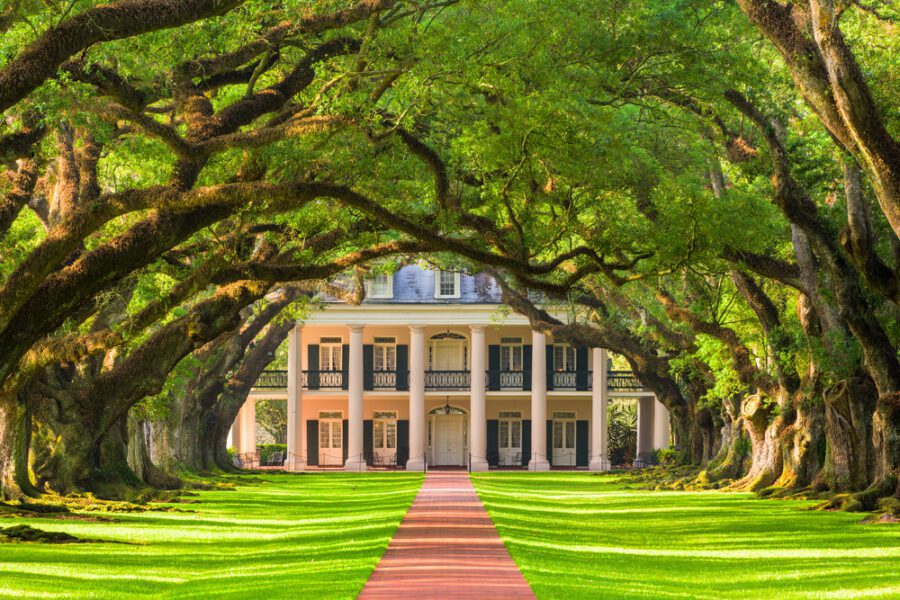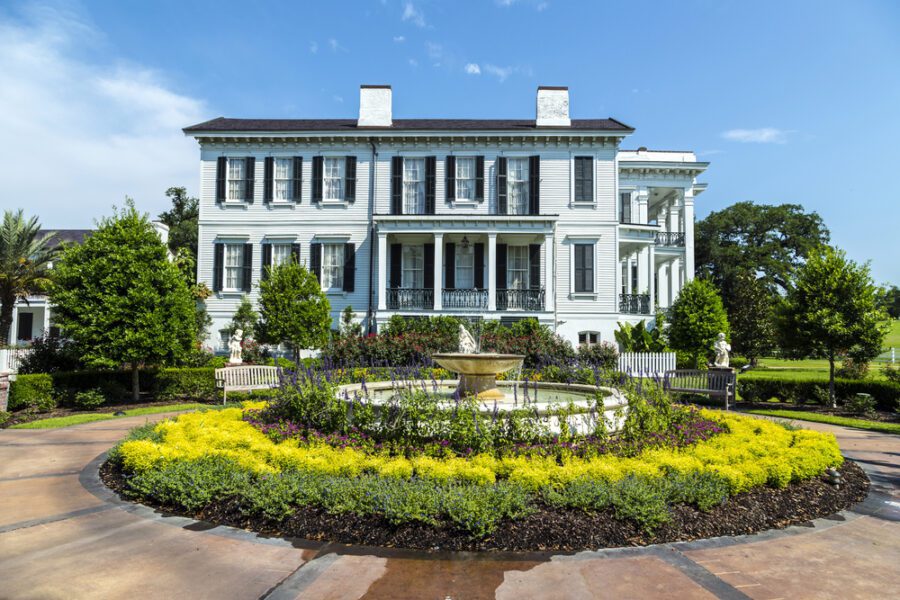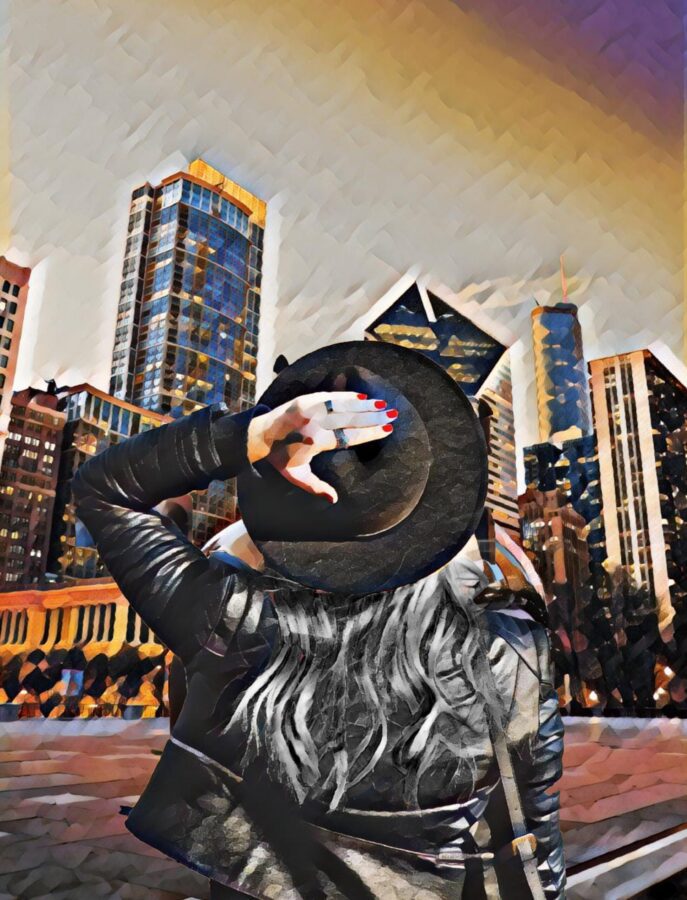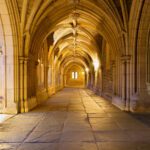With their architecture and remarkable gardens, historic Southern plantation homes are full of old-world charm and beauty. But more importantly, they have rich stories to tell because they played significant roles in our nation’s history. Today, it’s hard to believe, but more than 50,000 plantations operated during the antebellum period.
The economy of the 17th- and 18th-century American South was due to an insatiable demand for cotton, indigo, rice, and tobacco. Though most of them folded after the abolition of slavery, many of these magnificent properties on which this economy was built still exist and are rich in history.
Most of the plantations you can visit today are located in the Deep South, including South Carolina, Georgia, Louisiana, Alabama, and Mississippi. The ones open to visitors tend to be more impressive and often managed by state historical societies or parks programs. If experiencing the storied history and architectural beauty of a southern plantation home is in your future, then these 11 Significant Southern Plantation Tours in America should not be missed!

Oak Alley Plantation, Vacherie, LA
This plantation was first a sugar cane plantation started by Valcour Aime, who purchased the property in 1830. He established an enslaved community that worked the plantation. But in 1836, Jacques Roman bought the Oak Alley property and began to build his own home on the lot.
Accomplished entirely by slave labor, his house was built in Greek Revival style using bricks made on-site and marble shipped in by steamboat. The self-guided tour at Oak Alley centers on the lives and living conditions of those who were owned and kept on this plantation.
While visiting, learn about life after emancipation and stop by the Blacksmith Shop, which pays tribute to Louisiana artisans and the history of forging metalwork. This plantation can be found in the 1993 film, Interview With a Vampire and Beyoncé’s 2006 music video for Deja Vu.
Belle Meade Plantation, Belle Meade, TN
What started as a simple log cabin is now a plantation outside of Nashville that serves as an educational source. Established by John Harding in 1807, “Belle Meade” translates to mean beautiful meadow in old English and French. What started as a 250-acre property would become a 5,300-acre farm that raised thoroughbred horses.
Besides a Greek Revival Mansion, it had a train station and a rock quarry and raised five generations of owners with their enslaved workers. Today the site maintains 34 acres of the original property, including the mansion and original home. It is dedicated to the conservation of Tennessee’s Victorian architecture and equestrian history.
Visitors can enjoy a tour of the property led by trained and costumed guides, who share the mansion’s history and other historic buildings like a carriage house, horse stable, and log cabin. Free wine tasting is offered at the location’s winery after tours, and there is a gift shop and restaurant for visitors.
Shirley Plantation, Charles City, VA
This location remains a working plantation and privately-owned home to this day. This is the country’s first plantation built in 1613, only six years after English settlers founded Jamestown. The “Great House” was styled initially in Anglo-Dutch architecture through continuous efforts and additions with mixed styles, creating a charismatic aesthetic.
The Hill family has been living on the property for 11 generations, keeping the estate in beautiful, restored condition. You can learn about the amazing women who kept the farm operating during the Civil War and saved it from falling by caring for wounded Union soldiers.
Tours highlight the history of the plantation, including the role of religion in colonial America, colonial education, the history of the Hill family, and the effects of the Civil War and Civil Rights against the plantation. A new slavery exhibit has also been built in the original 18th-century outbuilding.

Nottoway Plantation, White Castle, LA
This is the south’s biggest antebellum mansion. Located northwest of New Orleans and southwest of Baton Rouge, Nottoway is a Greek and Italian-style mansion full of luxurious features and details. Over the years, Nottoway Plantation went through several different owners and years of decline but managed to survive the Civil War.
It was completed in 1859 by prestigious sugar planter John Hampton Randolph. As a wealthy businessman, he wanted no expense spared when it came to the home’s design. The 53,000sqft mansion has 64 rooms with 22 massive exterior columns, 12 hand-carved Italian marble fireplaces, 15ft ceilings, and a lavish pure white oval ballroom. He also installed modern bathrooms with running water and gas lighting throughout the home.
He wanted a home that would be seen by river boaters on the Mississippi River or riders on a horse-drawn carriage traveling on Great River Road. When you visit today, costumed tour guides take you through the mansion, sharing details of the property’s history.
Sherwood Forest, Charles City, VA
This location is unique because it’s the only private home to be owned by two presidents. William Henry Harrison purchased the house under the name “Walnut Grove.” After his death, his successor John Tyler purchased the plantation in 1842, renaming it Sherwood Forest to show his outlaw position in the Whig party. He lived in the house from the time he left the office until he died in 1862.
The Tyler family has continued living here since then, keeping the house in excellent condition. The property is open for tours daily between 9 am and 5 pm. Only 30 minutes from Williamsburg, Sherwood Forest is a Greek Revivalist wonder with 25 acres of gardens, woodlands, and outbuildings both original and reconstructed.
Visit the gardens once used by Civil War troops and even learn about the ghost, the “Gray Lady,” who has allegedly haunted the Gray Room for the past 200 years, rocking back and forth in her rocking chair.
Pebble Hill Plantation, Thomasville, GA
Melville Hanna, who obtained the property in 1896, gave the estate to his daughter, Kate, in 1901, and she immediately began construction on Pebble Hill, being actively involved in its design process. She first built a log cabin that served as a school and a playroom for her children.
She then continued with neo-classical brick structures like the Plantation Store, the Waldorf, the Pump House, and the Stables Complex. Kate being a humanitarian, provided many benefits to the 40 employees who worked on the plantation. The Visiting Nurse Association offered medical services for employees and their families, and two schools were built and maintained for employees’ children.
After Kate died in 1936, her daughter Elisabeth inherited the plantation and turned it into a museum. Finally, in 1956 the Pebble Hill Foundation made the property open to the public, and they maintain and manage the estate today.

Whitney Plantation, Edgard, LA
This historical complex, which includes 12 structures, was initially called the Habitation Haydel. The Spanish Creole-style main dwelling and its surrounding buildings were built by slaves under the owner, German immigrant Ambrose Heidel, in 1752.
This plantation stands as a memorial to the slaves sacrificed on the property and others like it. The Field of Angels especially is a section of the slave memorial site, dedicated to 2,200 Louisiana slave children who died before they were three. Ultimately, thirty-nine children died at Whitney between 1823-1863, only six of which made it to five years old.
Also dedicated to the slaves of Whitney, you’ll find the Slave Quarters site. You won’t find the original buildings here because the previous owners advocated for their removal in an attempt to raise property values. The ones that stand were moved from other plantations, supporting the authenticity and educational value of the site.
Andrew Jackson’s Hermitage, Hermitage, TN
The President and his wife lived here for years, living off profits made from the crops that slaves worked daily. When he initially bought The Hermitage in 1804, Jackson owned nine African American slaves, and by the time he passed away in 1845, he owned 150 slaves who lived and worked on the property.
Tours here cover over 1,000 acres of farmland that used to be The Hermitage Plantation. It was a self-sustaining property, relying on slave labor to produce cotton. Although slaves could not legally wed, Jackson encouraged them to form family units to discourage slaves from escaping since it would be more difficult for an entire family to flee safely.
Take a tour of the Hermitage and walk through the mansion and its grounds, where President Jackson and his wife are buried. Costumed tour guides share a detailed history of the Jackson family, the plantation, its buildings, and original belongings that have survived on the property.
Magnolia Plantation and Gardens, Charleston, SC
In 1676, Thomas Drayton, with his wife Ann, the first in the Magnolia family line that lasted for more than 300 years, established the Magnolia Plantation along the Ashley River. During the Colonial era, the plantation saw immense growth due to the cultivation of rice.
But once the American Revolution began, troops occupied the land, and Drayton and his sons became soldiers fighting the British. The American Civil War threatened the welfare of the Drayton family, the house, and the gardens, but the plantation recovered and saw additional growth of the gardens, which became the focus.
The property was saved from ruin by opening to the public and now offers guided tours taking visitors through the Drayton family home and gives a glimpse of what plantation life was like in the 19th century. This includes ten rooms that are open to the public, furnished with antiques, quilts, and Drayton family heirlooms.

Destrehan Plantation, Destrehan, LA
This Plantation in Louisiana was built in 1787 and is located 25 miles away from downtown New Orleans. It was home to successful sugar producers Marie Celeste Robin de Logny and Jean Noel Destrehan. By 1804, fifty-nine enslaved workers lived on the property, producing over 203,000 pounds of sugar.
This plantation is where one of the three trials after the 1811 Slave Revolt took place. Led by Charles Deslondes, it was one of the most significant slave revolts in US history. Visitors can tour the restored plantation, encircled by lush greenery, that looks over the Mississippi River.
Stories of the Destrehan family and those enslaved are shared through guided tours, which also feature historical exhibits and opportunities to participate in period demonstrations. Tours also include access to the Jefferson Room, displaying an authentic document signed by Thomas Jefferson and James Madison.
James Madison’s Montpelier, Montpelier Station, VA
Ambrose Madison, a slaveholder in Virginia, and his wife Frances and children arrived in 1732 at a plantation they named Mount Pleasant. James, the grandson of Ambrose, spent his early childhood here while construction on a brick Georgian house began that would later become the center of James Madison’s Montpelier.
This is the land where James Madison thought up ideas and shaped the US as the country’s 4th president. With 2,650 acres of rolling hills, horse pastures, and scenic views of the Blue Ridge Mountains, Montpelier offers insight into the Madison family history and provides a deeper look into Madison’s presidency. Exhibits on the grounds include the 1910 Train Depot, exploring the African American struggle for civil rights.
There’s also The Mere Distinction of Colour, allowing visitors to hear the stories of enslaved people at Montpelier, as told by their descendants. It recounts the events at Madison’s home and the South Yard of the land, where slaves lived and worked. The exhibition even explores how the legacy of slavery impacts race and human rights in modern America.
Speaking of tours in the US… There are plenty of them and we have some awesome estate tours to show!













